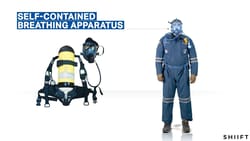Safety and Compliance Trainings
Safety and Compliance Trainings
Safety and compliance training provides instruction about workplace safety practices and adherence to regulatory and company policies. The goal is to minimize workplace accidents, ensure support regulatory compliance, and promote create a safe working environment.
Key components typically include the following:
Occupational safety: Identifying and mitigating workplace hazards, using personal protective equipment (PPE) properly, and following emergency procedures.
Regulatory compliance: Information on relevant laws and regulations from organizations such as the Occupational Safety and Health Administration (OSHA), U.S. Environmental Protection Agency (EPA), U.S. Food and Drug Administration (FDA), and the Health Insurance Portability and Accountability Act (HIPAA) to help ensure safe and legal operations.
Company policies: Detailed explanation of company-specific safety policies and procedures, including reporting protocols for accidents and unsafe conditions.
Risk management: Strategies for assessing and managing risks associated with specific job roles or tasks.
Incident response: Responding to accidents, including first aid, evacuation procedures, and incident reporting.
Ergonomics: How to set up and maintain a workspace to prevent musculoskeletal injuries.
Chemical safety: Handling, storage, and disposal procedures for hazardous materials.
Fire safety: Use of fire extinguishers, fire evacuation plans, and understanding fire risks.
Electrical safety: Safe use of electrical equipment and recognition of electrical hazards.
Behavioral safety: Encouraging a culture of safety through behavior-based safety programs that promote safe work habits and peer accountability.
Safety and compliance training courses are available online or as instructor-led programs at your facility, including:
• Confined space training
• Contamination control
• Electrical safety and lockout/tagout (LOTO) training
• Facility safety
• Fall protection
• First Aid, cardiopulmonary resuscitation (CPR), and basic life support (BSL)
• Hazard communication training
• Machine guarding
• Personal protective equpment (PPE) training
• Powered industrial truck training
• Respiratory protection
















